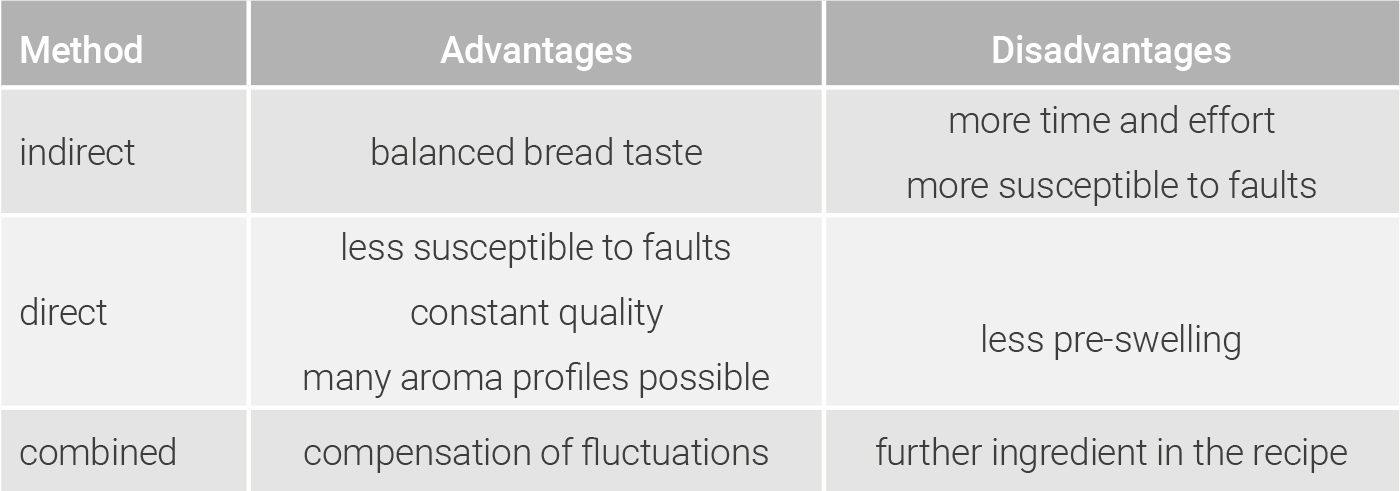In the production of bread containing rye, three different dough methods are possible, the indirect, the direct and the combined dough method.
Indirect dough method
The processing of a one-stage, two-stage or three-stage sourdough before the production of the main dough is understood by this. The active sourdough and all the other recipe components (remaining flour, salt, yeast, water) are mixed into a main dough after the processing of the sourdough.
Direct dough method
In the case of the direct dough method, no active sourdough is used. Instead, a dried sourdough and/or a dough acidifying agent is used and, together with all the other ingredients, mixed directly into the main dough.
Combined dough method
In the case of the combined dough method, a one-stage, two-stage or three-stage sourdough is made initially. When producing the main dough, a dried sourdough and/or a dough acidifying agent is added over and above this active sourdough.

